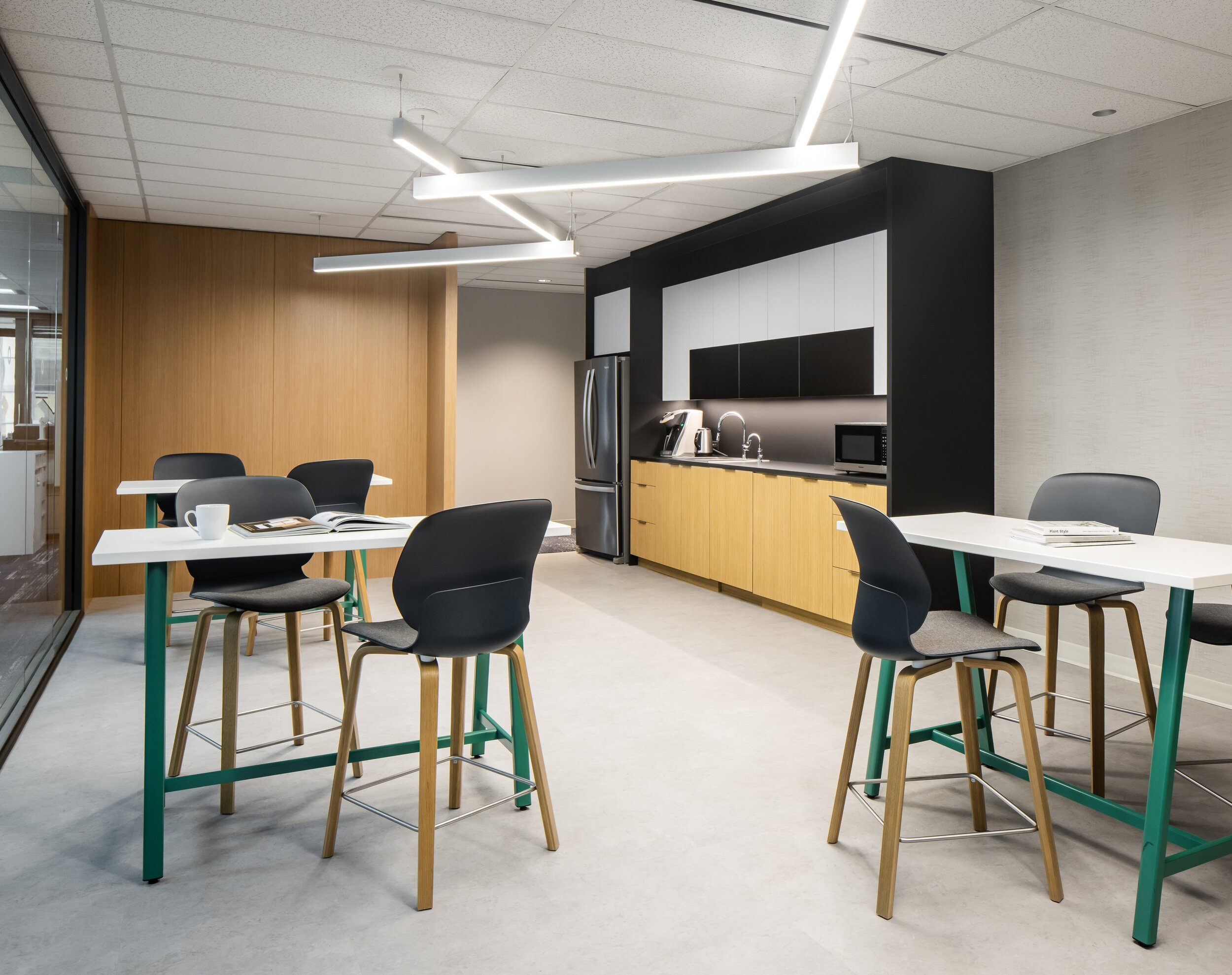Interior Design Tips to Future-Proof Your Hot-Desking Workspace
The quantum leap in telecommuting has dramatically changed the landscape of today’s labour force. As businesses begin to return to the office, employees are demanding flexible work conditions, while employers look to reduce the high costs of renting space.
These changes make hot-desking a viable commodity. Hot-desking provides employees with the option to use any desk at a given time, rather than having a permanent workstation. This model aims to maximize space efficiency, increase team collaboration, and improve knowledge circulation.
But will the hot-desking model really work in a post-pandemic workplace? It’s natural for businesses to have reservations over an ad-hoc, open-concept work arrangement on the heels of a global pandemic. However, in most cases, the challenges with hot-desking boil down to interior design.
Here are some ways to future-proof a hot-desking environment with interior design solutions.
Make your hot-desking workspace adaptable to change
Hot-desking is not only simply an aesthetics decision for companies — it’s also a cultural decision. As employees continue to split their time between work and home, hot-desking spaces must allow for flexibility.
You may think endless rows of desks and chairs are a requisite for hot desks. But in reality, the most successful offices give hot-deskers a range of workstations to suit their specific needs, whether it’s flexing their legs at a standing desk, meeting with colleagues in a glass-walled huddle room, or unwinding on a sumptuous couch. Lightweight, movable furniture will allow companies to adapt quickly and economically to organizational changes.
The configuration of the room also plays a big role in the success of a hot-desking model. There is more room for teamwork and creativity when hot-desking is approached through an open floor plan. Large, open spaces that eliminate traditional workplace barriers are where conversations start and great ideas are born.
Hot desks can still give employees a safe place to work
The open-concept nature of hot-desking environments can come at a cost: privacy. However, just because employees no longer “own” their workstation, it doesn’t mean they have to relinquish a sense of peace and quiet. Adding small, acoustic privacy screens can afford workers privacy and the ability to concentrate.
Hot desks must also suit the new capacity of the office. Though an entire team won’t be in the office simultaneously, desks should be large enough to ensure a safe distance between employees. It’s also important to consider traffic patterns and activity zones in the office so hot desks do not intersect where people move or congregate.
Hot-desking means your workforce only needs the bare necessities
Small details make a big difference when it comes to implementing hot desks. Since these workstations are not dedicated, employees must have easy access to the tools they need to do purposeful work throughout the day.
The items companies should provide employees will vary depending on the employee and their work style, but most companies will offer access to wall plugs and charging ports, wireless keyboards, dongles, ergonomic seating, and external monitors.
Storage options, such as personal lockers, cabinets, and pencil holders, also give hot-deskers the ability to keep personal belongings at their fingertips without creating clutter.
Dial down the volume for hot-deskers
Another important benefit of hot-desking is that this model allows employees to be near other colleagues. Unfortunately, this also presents one of the biggest challenges with hot desks: ensuring employees can be productive with minimal distraction.
The sounds of water-cooler chatter and phone conversations travel and amplify in open-plan spaces, so acoustic design is key when considering a hot-desking model. Hard surfaces, such as wood and metal, are generally the culprit for high noise levels in hot-desking environments because they intensify and amplify sound.
Therefore, using soft materials and furnishings that absorb noise can have countless benefits for both productivity and aesthetics. Wall-mounted acoustic panels can also minimize the echo effect of large, open-concept rooms.
You can make a hot-desk workplace feel like home
After more than a year of working from home, leaving the comfort of a sofa or kitchen table is going to be a challenge for employees. More than ever, hot desks will need to meet workers’ increased needs for comfort and adaptability.
Colour selection should create an inviting, refreshing environment. Though specific colour choices vary depending on a company’s preference or brand, warm tones, like red, can energize a space and its occupants and are a good choice for designated workstations. Cooler tones, on the other hand, such as blues and greens, can create more slow-paced, relaxing atmospheres well-suited to lounge or break areas.
By incorporating texture into the design of a hot-desking environment, you can play with contrast to balance various design aspects in the office for a more interesting visual aesthetic. Area rugs, for example, can add character to an open-floor space while zoning off work areas from places where employees can kick up their feet.
When eyes are strained after hours of staring at a screen, biophilic design can provide employees with a therapeutic visual relief from hours spent in front of the harsh light of a computer screen. Aside from their aesthetics, organic elements, such as wood, stone, green walls, and vertical gardens can significantly impact employees’ mental health and productivity.
Conclusion
The demands for flexibility are only increasing, and the beauty of hot desks is that they are flexible by nature.
There is no one-size-fits-all approach to the post-pandemic office. Companies will test and troubleshoot over the next few months as they explore what design options work best for their employees. Hot-desking will certainly be a big part of that experiment.
Looking to implement hot-desking in your post-pandemic workplace? Get in touch with us to see how 34F can help you future-proof your office.






